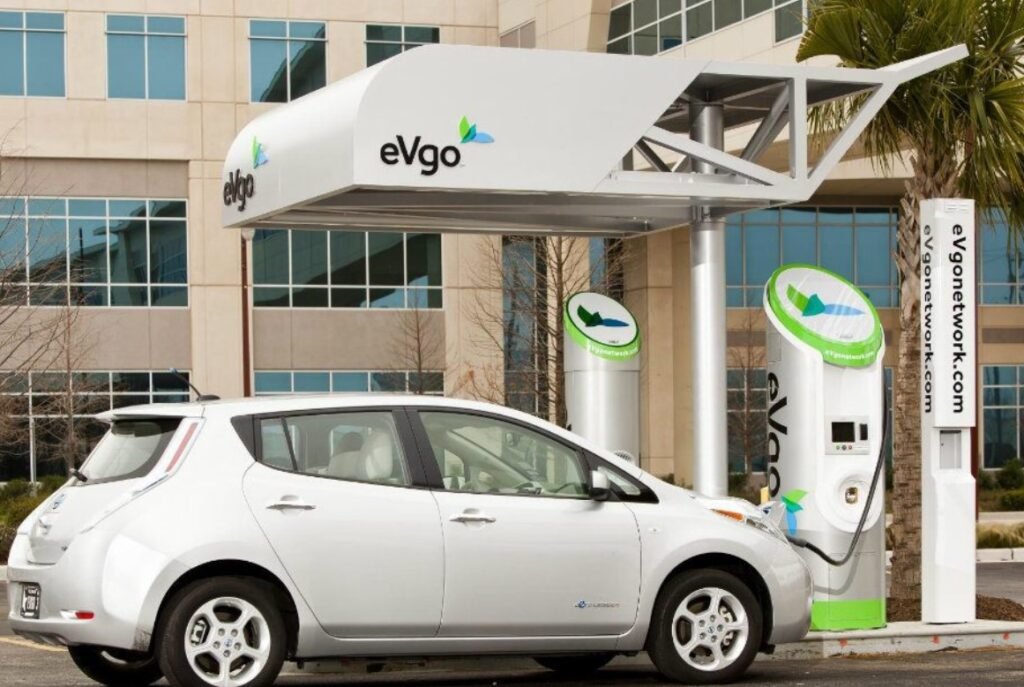With the shift toward electric vehicles (EVs) in full force, charging stations are evolving from simple utilities into potential “third places”—communal spaces outside of work and home. For EV enthusiasts and companies alike, charging spots might just be the unlikely answer to a growing epidemic of social isolation. Companies across sectors are taking note, with younger generations driving demand for spaces that encourage socialization and meaningful connections.
EV Stations: From Utility to Community Hub?
In the race to electrify, most industry leaders have focused on building enough public charging infrastructure to support the growing EV market. While this rapid expansion is essential to ease “range anxiety,” it’s now clear that the nature of these stations can go beyond solving practical issues. It’s not a new idea that people want a comfortable, inviting environment. The surprising part is that the experience itself may actually influence where and how often drivers return to recharge their vehicles.
- Survey Highlights:
- 40% of respondents cited the charging experience as a top factor for station preference.
- 58% indicated a preference for social settings, such as restaurants or cafes, over isolated car waiting.
It’s not only about function but creating spaces where people naturally congregate. Companies such as Starbucks and property groups like Simon Property Group are partnering with charging networks to facilitate these social, convenient spaces. This growing trend may mark the beginning of a shift, where refueling becomes less of a chore and more of a socially enriching experience.

Designing Experiences That Build Community
Some EV companies are already creating infrastructure aimed at generating human connection. For instance, Rivian’s Adventure Network has been designed with outdoor enthusiasts in mind, setting up charging stations near national parks. Rove has collaborated with local retailers to bring quality food and drinks to its locations, providing drivers with a place to unwind, eat, and chat with fellow EV owners.
A case study in community-centered design, these stations combine utility with comfort and leisure:
- Rivian Adventure Network: Positioned near popular outdoor sites, encouraging interaction among travelers.
- Rove’s Partnership with Gelson’s Grocers: Premium food and beverages for a richer, in-person experience.
- Tesla Superchargers in Retail Locations: Placing chargers in shopping hubs to encourage interaction and shopping.
Drivers appreciate spaces that allow them to make the most of their time, whether to dine, relax, or chat. The chance to discuss EV insights with other drivers in person—much like Tesla owners might share tips online—creates a bonding experience that’s missing from gas stations.
The Growing Demand for Modern “Third Places”
EV stations represent just one front in the larger push to revive communal spaces. Companies like Starbucks, for instance, are revisiting the idea of their cafes as “third places”—a place for people to unwind outside of work or home. With loneliness a growing concern across generations, particularly for Gen Z, there’s a clear demand for authentic community spaces.
This move toward community-centric environments is supported by data:
- In recent studies, a significant number of customers indicated that a welcoming, interactive environment is essential for regular visits.
- Analysts attribute part of Gen Z’s buying decisions to factors beyond product price or convenience, preferring experiences that provide a break from the isolation linked with remote work and online interaction.
For Starbucks, the return to its roots means investing in cozy, inviting spaces rather than efficiency alone. This trend may also benefit other industries as they adopt a more socially driven business model.
Charging Time as “Valuable Time”
EV infrastructure companies face a unique challenge: they must turn the necessary pause of charging into an opportunity for meaningful engagement. At present, a charging session may take 20 to 40 minutes—a perfect window for social interaction, dining, or even some light shopping. For many drivers, that’s time worth spending well.
The question then becomes: How can charging stations be designed to fulfill this need? For some, it may be the inclusion of comfortable seating, Wi-Fi, or even local food vendors nearby. For others, like the partnerships with Starbucks or major shopping centers, these experiences become a way to recharge both the car and the mind.
EV Charging Station Preferences
| Feature | Preference Percentage |
|---|---|
| Social setting with food | 58% |
| Quiet individual space | 25% |
| Access to amenities (Wi-Fi) | 35% |
| Green space nearby | 20% |
As more Americans adopt EVs, the charging station experience could be a deciding factor in how, when, and where they charge. The desire for efficient, comfortable, and social spaces makes these stations a promising arena for innovation, likely driving more EV companies to think beyond functionality.
